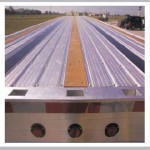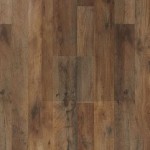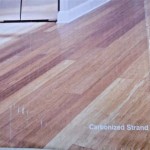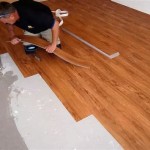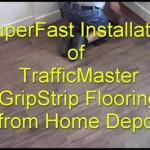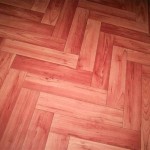Exploring the Advantages of 1/2 Inch Engineered Wood Flooring
Engineered wood flooring has become a popular choice for homeowners and builders alike, offering a compelling alternative to solid hardwood. Among the various thicknesses available, 1/2 inch engineered wood flooring strikes a balance between cost-effectiveness, durability, and ease of installation. This article delves into the reasons why 1/2 inch engineered wood flooring is a viable option, examining its construction, benefits, installation considerations, and maintenance requirements.
Engineered wood flooring, unlike solid hardwood, is composed of multiple layers. The top layer, known as the veneer or wear layer, is a thin slice of real hardwood. This layer provides the aesthetic appeal of solid hardwood, exhibiting the natural grain patterns and color variations of the chosen wood species. Below the veneer lies the core, which is typically constructed from multiple layers of plywood or high-density fiberboard (HDF). These layers are bonded together with adhesives under heat and pressure in a cross-directional manner, resulting in a dimensionally stable product that is less susceptible to expansion and contraction caused by changes in humidity and temperature compared to solid hardwood.
The 1/2 inch thickness refers to the overall thickness of the engineered wood plank, including the veneer and the core layers. While other thicknesses are available, ranging from thinner options like 3/8 inch to thicker alternatives like 3/4 inch, 1/2 inch engineered wood flooring offers a sweet spot for many applications.
Enhanced Dimensional Stability
One of the primary advantages of engineered wood flooring, and particularly the 1/2 inch variety, is its enhanced dimensional stability. Solid hardwood is highly reactive to changes in moisture levels. In humid environments, it can absorb moisture and expand, potentially leading to buckling or cupping. Conversely, in dry environments, it can lose moisture and contract, creating gaps between planks. This instability can pose significant problems, especially in regions with fluctuating humidity levels or in areas prone to moisture, such as basements.
The multi-layered construction of engineered wood flooring mitigates these issues. The cross-directional construction of the core significantly reduces the wood's tendency to expand and contract. This makes 1/2 inch engineered wood flooring a more suitable choice for installation in a wider range of environments, including basements and over concrete slabs, where moisture levels can be a concern. It is still crucial, however, to conduct proper moisture testing of the subfloor before installation to ensure that moisture levels are within acceptable limits.
Furthermore, the greater stability translates to a longer lifespan for the flooring. Reduced expansion and contraction minimize stress on the planks and the adhesive or locking mechanisms, resulting in a more durable and long-lasting floor compared to solid hardwood in comparable conditions. This stability also allows for wider plank widths and longer plank lengths, which can create a more modern and spacious look without the risk of excessive movement.
Cost-Effectiveness and Value
Generally, 1/2 inch engineered wood flooring is more cost-effective than solid hardwood flooring of comparable quality and species. The lower cost stems from several factors. First, the use of a thin veneer layer reduces the amount of expensive hardwood required per plank. Second, the core material, typically plywood or HDF, is generally less expensive than solid hardwood. This allows manufacturers to produce a flooring product that offers the aesthetic appeal of hardwood at a more accessible price point.
The cost savings extend beyond the initial purchase price. Due to its dimensional stability, 1/2 inch engineered wood flooring may require less maintenance and fewer repairs over its lifespan compared to solid hardwood, particularly in environments with fluctuating humidity levels. This can translate to long-term savings for homeowners.
Moreover, the relatively straightforward installation process can further reduce costs. Many 1/2 inch engineered wood flooring products are designed with click-lock systems, allowing for a floating installation. This type of installation does not require nails or glue, making it a viable option for DIY enthusiasts, thereby saving on professional installation fees. However, it's imperative to adhere to manufacturer's instructions and recommendations for subfloor preparation and installation techniques to ensure a successful outcome.
The variety of wood species and finishes available in 1/2 inch engineered wood flooring offers a broad range of design possibilities. Whether one prefers the classic warmth of oak, the rich tones of walnut, or the modern appeal of maple, there are numerous options to suit different aesthetic preferences and budgets. This versatility allows homeowners to achieve the desired look and feel of hardwood flooring without the higher cost associated with solid hardwood.
Ease of Installation and Versatility
The installation process for 1/2 inch engineered wood flooring is generally considered easier than that of solid hardwood, particularly for floating floor installations. Floating floors are not directly attached to the subfloor, but rather interlock together to form a continuous surface. This method eliminates the need for nailing or gluing, simplifying the installation process and reducing the time required for completion. This is especially advantageous for DIY projects and can significantly lower installation costs.
The click-lock systems commonly used in engineered wood flooring further enhance the ease of installation. These systems feature interlocking edges that snap together, creating a tight and secure connection between planks. This eliminates the need for specialized tools or adhesives, making the installation process more accessible to individuals with basic carpentry skills. However, proper subfloor preparation is still crucial for a successful floating floor installation. The subfloor must be level, clean, and dry to prevent issues such as squeaking or unevenness.
Furthermore, 1/2 inch engineered wood flooring is compatible with various subfloor types, including concrete, plywood, and existing wood floors. This versatility makes it a suitable option for both new construction and renovation projects. When installing over concrete, it is important to conduct moisture testing to ensure that the concrete slab is sufficiently dry. A moisture barrier may be required to prevent moisture from wicking up into the flooring and causing damage. When installing over existing wood floors, it is essential to ensure that the existing floor is structurally sound and level.
The relatively thin profile of 1/2 inch engineered wood flooring can be advantageous in situations where maintaining existing floor heights is important. This is particularly relevant in renovation projects where matching the height of adjacent flooring surfaces is desired. Thicker flooring options may require adjustments to doorways or transitions, which can add to the overall cost and complexity of the project. The thinner profile of 1/2 inch engineered wood flooring can minimize the need for these adjustments, simplifying the renovation process.
While easy to install, correct preparation is key. The subfloor must be properly prepared by leveling, cleaning, and drying it. Failure to do so can result in shifting, sagging, or squeaking after the flooring has been installed. It is also important to leave an expansion gap around the perimeter of the room to allow for natural movement of the flooring. This will prevent the flooring from buckling or cupping due to expansion.
In summary, 1/2 inch engineered wood flooring presents a compelling combination of advantages, including enhanced dimensional stability, cost-effectiveness, and ease of installation. Its multi-layered construction makes it less susceptible to changes in humidity and temperature compared to solid hardwood, making it a suitable choice for a wider range of environments. The lower cost, relative to solid hardwood, makes it an attractive option for budget-conscious buyers, while the variety of species and finishes available ensures that there's a style to suit any aesthetic preference. The ease of installation, especially for floating floors, further enhances its appeal, making it a viable option for DIY enthusiasts and those seeking to minimize installation costs. Despite the ease of installation, it is vital to follow manufacturer guidelines and ensure correct subfloor preparation in order to ensure a durable and long lasting final product.

5 X 1 2 Engineered Natural Maple Hardwood Flooring Hardwoods4less Com

1 2 X 5 Engineered Hickory Natural With 3mm Wear Layer

Maple Natural 6 X 1 2 Engineered Hardwood Flooring By Oasis United Whole

Albuquerque Collection Engineered Hardwood In Natural White Oak 1 2 X 5 39sqft Case Com

7 1 2 X Engineered Hickory Huntington Stain Hardwood Flooring Hardwoods4less Com

French Oak Du Monde Lincoln Engineered Brushed Rustic 1 2 X 7

Wood Floors Plus Engineered Hardwood Clearance White Oak Natural 1 2 Inch X 3 21 18 Sf Ctn Cabin Grade

Engineered Birch Select 4 X 1 2 Inch Floors Depot

Malibu Wide Plank Estero Maple 1 2 In T X 7 5 W Water Resistant Wire Brushed Engineered Hardwood Flooring 1398 6 Sq Ft Pallet Hdmptg331efp The Home Depot

Discount 5 X 1 2 Hickory Character Hand Sc 3mm Wear Layer Prefinished Engineered Hardwood Flooring By Hurst Hardwoods
Related Posts

